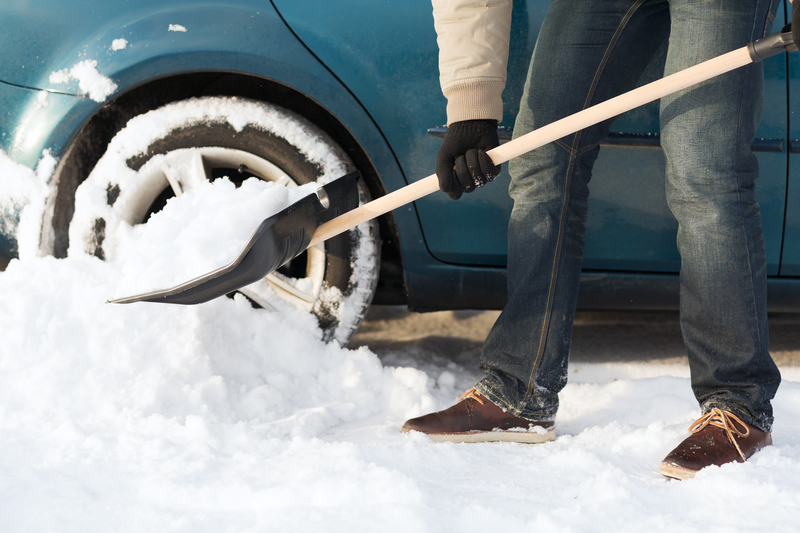Vase Storing Techniques
Posted on 02/07/2025
Vase Storing Techniques: Preserving Beauty and Functionality
Vases are more than just containers for flowers; they are decorative elements that add elegance and charm to our homes. Whether they are heirlooms, gifts, or impulsive buys, the proper storage of vases can extend their life and maintain their beauty. In this article, we will delve into various vase storing techniques to help you preserve these delicate items effectively.
Understanding the Importance of Proper Storage
Before diving into the specifics, it's crucial to understand why proper storage is important for vases. First and foremost, vases are often made of fragile materials such as glass, porcelain, or ceramic, which can easily break or chip. Incorrect storage can lead to physical damage, diminishing their aesthetic and functional value.
Moreover, improper storage can also influence the longevity and appearance of vases. Factors such as moisture, temperature fluctuations, and inadequate support can adversely affect the materials, leading to discoloration, cracks, or mold growth.

Basic Preparations for Storing Vases
Before storing your vases, make sure they are thoroughly cleaned and dried. Residual water or dirt can create stains or foster mold growth, particularly if the vase will be stored for an extended period. Use a soft cloth or sponge for cleaning and ensure that each piece is completely dry before proceeding.
Choosing the Right Storage Location
The storage location plays a significant role in preserving your vases. Select a spot that is cool, dry, and relatively stable in temperature. Attics and basements might seem like convenient options, but they often suffer from temperature and humidity fluctuations. Instead, opt for an interior closet or a storage room that offers a controlled environment.
Here, the use of a dehumidifier can be beneficial especially in areas prone to high humidity levels. Ensure the storage location is free from pests and easily accessible to avoid any mishandling during future retrievals.
Utilizing Storage Padding and Containers
One of the most effective ways to protect vases is by using adequate padding. Bubble wrap, packing peanuts, and foam sheets are excellent materials to cushion your vases. Wrap each vase individually, focusing on the more fragile parts such as the neck and the base. Secure the wrapping with tape but make sure it doesn't directly adhere to the vase as it can leave a residue.
After padding, carefully place the vases in sturdy containers. Boxes made of heavy-duty cardboard or plastic bins with lids are ideal choices. Line the bottom of the boxes with additional padding, and if you are storing more than one vase in a box, ensure they are separated with padding material to prevent them from knocking against each other.
Labeling and Organizing
Proper labeling is crucial when storing vases to ensure easy identification and retrieval. Clearly label each container with its contents, and consider adding a brief description or photograph of the vase inside. This method helps in quickly locating the desired vase without the need to open multiple boxes, reducing the risk of accidental damage.
Organization within the storage space is equally important. Place containers with vases in a stable, flat area where they are less likely to be disturbed. Avoid stacking heavy items on top of the containers, and if you need to stack vases, ensure the heavier containers are at the bottom.
Storing Special and Antique Vases
Special or antique vases require extra care due to their age and intrinsic value. For these items, consider using custom-fit containers or even professional storage solutions if they are particularly valuable. Additionally, it might be worthwhile to look into climate-controlled storage units for preserving the integrity of antique vases over long periods.
If the vases have any existing signs of damage or wear, consult a conservator before storing them to prevent existing issues from worsening. Additionally, document the vases with photographs before packing them away; this will be useful for both inventory purposes and in case of insurance claims.
Monitoring and Maintenance
Effective storage doesn't end once the vases are packed away. Regularly check on the storage area to ensure it remains dry and free from pests. If you notice any changes in the storage environment, address them promptly to prevent damage. Periodically inspect the vases for any signs of wear or damage and clean them as necessary.
Rotating vases every few months can also be beneficial. This practice allows you to enjoy different pieces seasonally and ensures they aren't forgotten in long-term storage, which can lead to neglect and potential damage.

Eco-Friendly Storage Solutions
For those concerned about the environmental impact, consider eco-friendly storage materials such as biodegradable packing peanuts, recycled cardboard containers, and fabric padding. These alternatives not only provide the necessary protection but also reduce your ecological footprint.
Additionally, reusing old blankets, towels, and linens as padding materials is a great way to recycle household items while providing excellent protection for your vases.
Final Thoughts
Proper vase storage is essential to preserve their beauty and functionality over time. By following these vase storing techniques--from choosing the right storage location and padding to regular maintenance and eco-friendly solutions--you can ensure that your vases remain in pristine condition for years to come. Remember, each vase has its unique requirements, so tailor these general guidelines to suit the specific needs of your treasured pieces.







